Conservationist in Congress
Congressman Saylor was known for his stance on environmental issues and conservation of natural resources. The John P. Saylor website was created by Karen Woods in 2001. Learn about Congressman Saylor's career, Manuscript Group 18: John P. Saylor Collection.
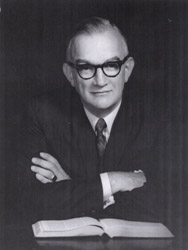

Biographical Information
John Phillips Saylor was born on July 23, 1908 on a farm in Conemaugh Township in Somerset County, near Johnstown, Pennsylvania. His parents passed along their great respect for the environment to their son. He graduated from Franklin and Marshall College in Lancaster, Pennsylvania in 1929. After receiving a degree from Dickinson College Law School in 1933, he joined his father's law firm in Johnstown. He was elected city solicitor of Johnstown in 1938, and served for two years.
Public Service
During World War II, Saylor enlisted in the US Navy on August 6, 1943, and served in the Pacific until January 1946. On September 13, 1949, he was elected to the House of Representatives as a Republican to the 81st Congress, by special election, to fill the vacancy caused by the death of Robert L. Coffey. He was re-elected to 12 succeeding Congresses.
During his time in Congress, Saylor became dedicated to a number of environmental causes including the Wilderness Act of 1964, the Ozark National Scenic Riverways Act, and National Wild and Scenic Rivers Act. He was best known for his support of legislation that would preserve scenic natural areas of the country. In his home state of Pennsylvania, he opposed the Kinzua Dam, which was proposed as a means of flood control on the Allegheny River. Saylor claimed that the dam would not have a significant impact upon flood protection in the area and that it would destroy one of the last unspoiled stretches of the river. Also, it would lead to the appropriation of Seneca Nation lands, which would violate a treaty made between them and the United States in 1794. Kinzua Dam was ultimately built, but Saylor continued his preservation efforts and eventually became more successful. One of his main efforts in this field was his Scenic Rivers Bill. This bill proposed the protection of several rivers that were designated as "scenic" and made allowances for other rivers to be given this same protection.
After several modifications, the National Wild and Scenic Rivers Act was finally passed in 1968. Saylor received many honors and accolades for his work in getting the bill through Congress. His work on this and other conservation legislation did much to help protect valuable scenic areas of the nation.
Thomas G. Smith, author of Voice for Scenic Rivers: John P. Saylor of Pennsylvania:
His father . . . was an avid hiker, hunter, and angler who instilled a passion for those outdoor activities in his sons. The family joined a Sportsmen's Association that owned a hunting and fishing camp in Potter County and throughout his life John Saylor took refuge at Lost Cabin.
Starting in 1957, Saylor began voicing his strong opposition to the construction of the Kinzua Dam on the Allegheny River near Warren. Styled a "nature-loving obstructionist" by one of his congressional colleagues, he opposed the dam because its high cost ($120 million) and size, it's debatable effectiveness on flood control and the Army Corps of Engineers' stubborn refusal to study alternative plans, its destruction of one of the most scenic stretches of river in Pennsylvania, and most of all because of its breaking of the 1794 treaty with the Senecas, the oldest federal treaty that was still in effect at that time.
Kinzua Dam and Allegheny Reservoir were under construction from 1960 to 1966, and cost $120 million. The Kinzua Dam was 179 feet high and 1915 feet long. The length of the Alleghany Reservoir was 27 miles, and it consisted of 91 miles of shoreline. The water surface area was 12,000 to 20,000 acres.
President George Washington, Proclamation to Chief Cornplanter of the Senecas, December 29, 1790:
. . . our great object seems to be the security of your remaining lands, and I have therefore, upon this point, meant to be sufficiently strong and clear. That in the future you cannot be defrauded of your lands; that you possess the right to sell and the right of refusing to sell your lands.
Timothy Pickering, personal envoy of President Washington, letter to the Seneca Nation, 1794:
. . . This [Treaty of 11 November 1794] is a new and important security guard against your being cheated; and shows the faithful care which the United States now means to take for the protection of your lands.
Despite the opposition of Saylor and others, and several suits made by the Seneca Nation against the Army Corps of Engineers, which were ultimately dismissed by the Supreme Court, the Treaty of 1794 was broken, and construction of the Kinzua Dam began in 1960.
The Kinzua Dam caused the complete inundation of almost 10,000 acres of Seneca lands, and rendered another 20,000 acres of their land virtually useless because of periodic flooding caused by fluctuating water levels in the reservoir. Almost 700 members of the Seneca Nation were forced to relocate. The federal government eventually compensated the Senecas $15 million for the land and the relocation costs.
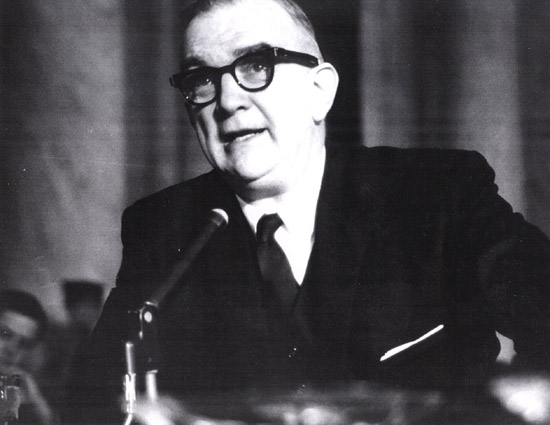
In appreciation for his contributions to the opposition of the Kinzua Dam, the Seneca Nation made Saylor an honorary member on 15 September 1962.
After several versions of a Scenic Rivers bill failed to gain enough votes in Congress, Saylor in 1966 introduced his own comprehensive Scenic Rivers Bill into the House. Drafted with the assistance of the Interior Department's Bureau of Outdoor Recreation, the Audubon Society, and other conservation groups, the bill called for widespread protection of the nation's free-flowing rivers.
Despite the initial opposition to the Kinzua Dam, it has since proven to be a popular destination for outdoor recreation. Approximately one million people visit the Kinzua Dam and the adjoining Allegheny National Forest annually.
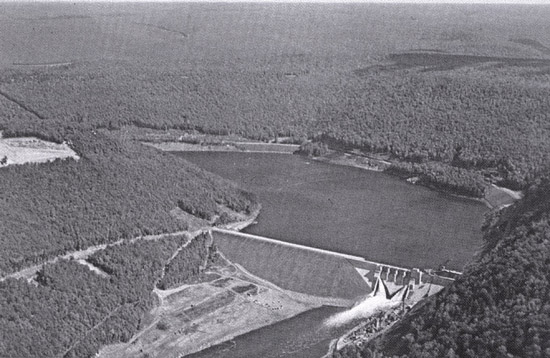
Saylor's bill met much opposition in the House Committee on Interior and Insular Affairs, of which he was a member. He vowed to "hit, kick, and scratch" in order to get his bill passed. When a fellow representative introduced a competing, less-inclusive bill, Saylor saw this as an opportunity to forge a compromise bill. This compromise passed in the Senate 84-0, but still met resistance by development-minded members of the House. Upon further pressure by Saylor, conservationists, and the public, the House finally approved the bill 265-7.
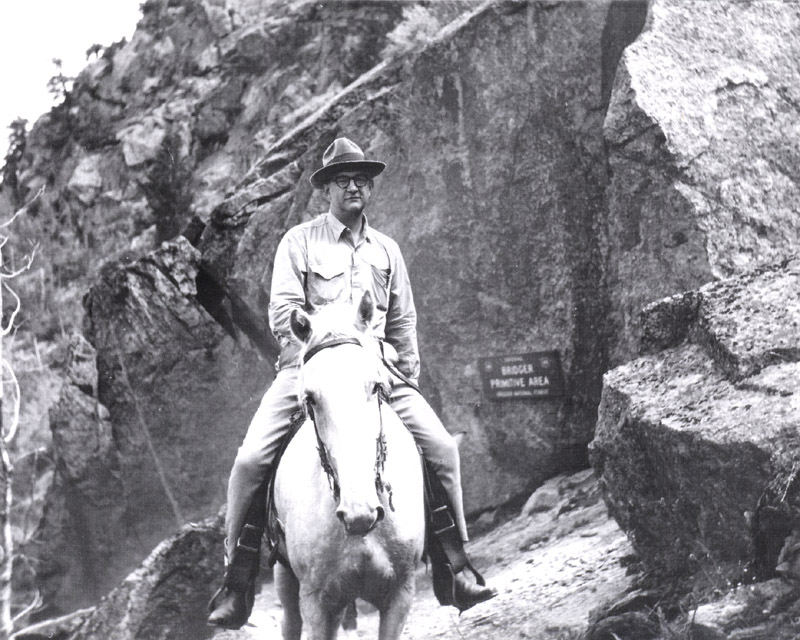
The National Wild and Scenic Rivers Act was signed into law by President Lyndon B. Johnson on October 2, 1968. The act stated that "[i]t is hereby declared to be the policy of the United States that certain selected rivers of the Nation which . . . possess outstandingly remarkable scenic, recreational, geologic, fish and wildlife, historic, cultural, or other similar values, shall be preserved in free-flowing condition, and that they . . . shall be protected for the benefit and enjoyment of present and future generations." The act immediately protected eight rivers and placed twenty-seven more on a "study list" for possible future inclusion. Saylor was dubbed "Mr. Conservation" by his colleagues for his diligent work on the bill.
The Wild and Scenic Rivers Act is enforced up to the present. Rivers are periodically added to the protected list. Saylor hoped that the Scenic Rivers Bill would prevent any further development of America's unspoiled rivers, such as this western power project. From eight rivers covering 850 miles in 1968, the system has grown by the mid-1990s to include 151 units comprising parts of 212 rivers that cover 10,500 miles. Saylor's conservation legacy has remained a vital part of our country's efforts to preserve the natural environment.
Saylor was the recipient of many awards for his involvement in conservation efforts. From the Ozark National Scenic Riverways Act in 1964, the first federally protected rivers, to the Wilderness Act and the Wild and Scenic Rivers Act, Saylor's accomplishments have been praised as essential to the preservation of our country's natural scenic resources. The photograph below was taken when President Lyndon B. Johnson and Congressman Saylor commemorated the passage of the National Wild and Scenic Rivers Act in October 1968. In 1970, the Izaak Walton League of America bestowed its highest honor, the Founders' Award to Congressman Saylor "for two decades of unprecedented leadership in the Congress of the United States for sound resource management, the preservation of natural scenic and cultural values, the maintenance of a quality environment, and the unalienable right of citizens to be involved in resources and environmental decisions." He was known as a "Defender of Soil, Woods, Waters, and Wildlife."
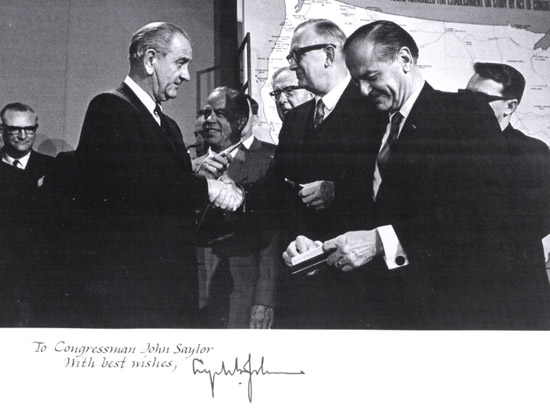
Congressman Saylor served in the U.S. House of Representatives from 1949 until his death on October 28, 1973 in Houston, Texas. John Murtha was elected to represent the 12th District of Pennsylvania after the death of John P. Saylor. The John P. Saylor Trail in Pennsylvania's Gallitzin State Forest is appropriately named after Congressman Saylor. For more information about Manuscript Group 18: John P. Saylor Collection, visit the IUP Special Collections and University Archives in Stapleton Library Room 302.